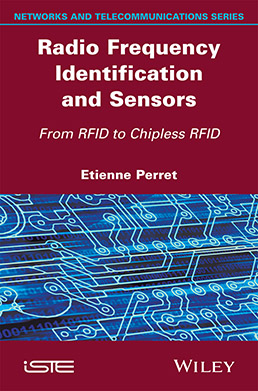
Radio Frequency Identification (RFID) is based on the exchange of information carried by electromagnetic waves between a label, or tag, and a readerfor the purpose of automatically identifying and tracking tags attached to objects. This technology is currently in full economic expansion, manifested inits widely backed research activities, some of which are examined in this book. The rate at which RFID technology is growing is evident by the multiple annual international conferences dedicated specifically to this theme. RFID sessions are included in every conference revolving around microwaves, Radio Frequency systems, or issues of communication. Due to the versatilityof this approach, it is possible to address extremely broad domains ranging from software to components.
Today, there are thousands of applications that involve RFID. Cost remains its most important competitive aspect, clearly distinguishing it from other systems such as Bluetooth or ZigBee. In passive ultra-high frequency RFID, the absence of a battery in the tag results in a much lower cost, and it is possible to obtain disposable tagsfor many of its applications. In our near future, chipless RFID, which also allows for usage via radio frequency but without the need for a chip and hence at a much lower cost, is likely to substitute current RFID systems.
This book is dedicated to current RFID technology, which is be discussed in Part I, as well as the future directions of the field with the development of chipless technology, whose current use and future applications are discussed in Part II. By using specific examples of current usage and discussing the different practicalapproacheswithin which it is expected that the chipless approach might develop, this book aims to compile the past and present of RFID technology in order to enlighten its future.
Part 1. Radio-frequency Identifications
1. Introduction to RFID.
2. Antenna Design for UHF RFID Tags.
3. New Developments in UHF RFID.
Part 2. Chipless RFID
4. Introduction to Chipless RFID.
5. Development of Chipless RFID.
6. Perspectives on Chipless RFID Technology.
Etienne Perret is Professor at the Grenoble Institute of Technology and member of the Institut Universitaire de France. His research interests include wireless communication systems, particularly within Radio Frequency Identification.